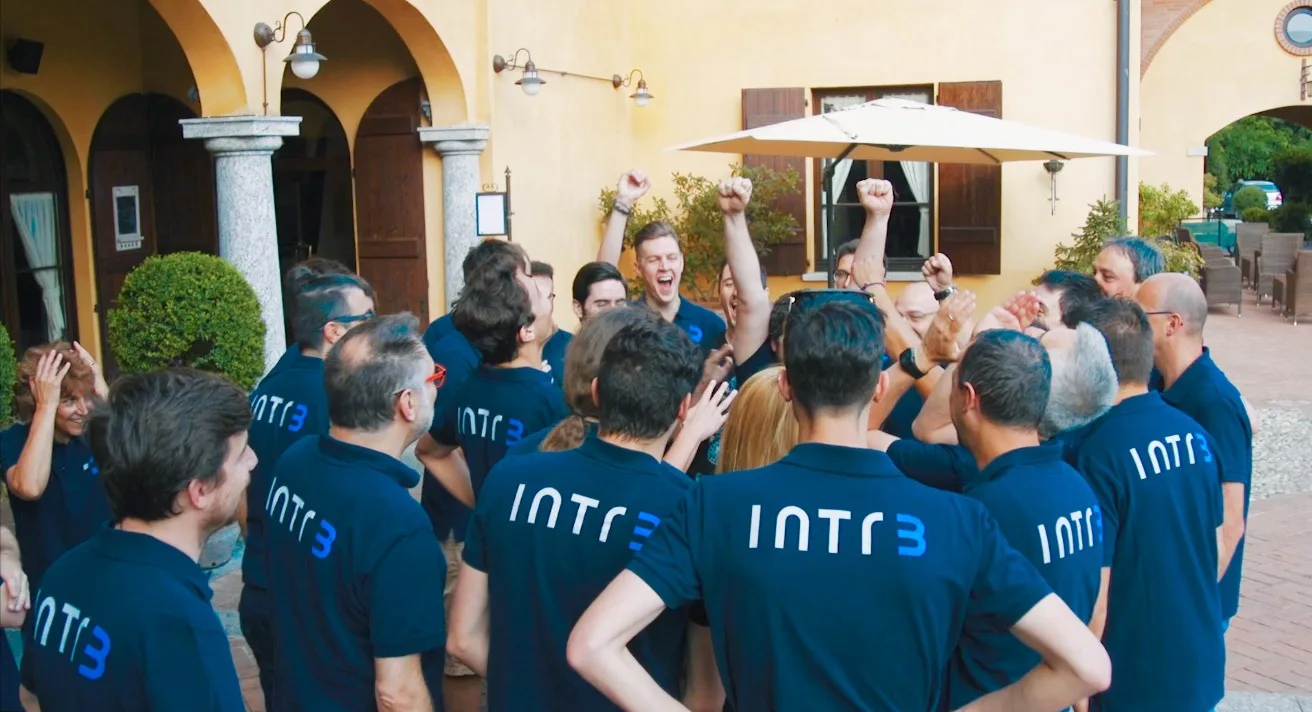10 Practices for Building a Learning Organization: The Intré Model
The article is based on the talk by Fabio Ghislandi “Pratiche per costruire una learning organization” held at the Italian Agile Days 2023, with content updated as of the publication date.
The Manifesto for Agile Software Development states these key principles:
- “Continuous attention to technical excellence and good design enhances agility.” – 9th principle
- “Build projects around motivated individuals. Give them the environment and support they need, and trust them to get the job done.” – 5th principle
- “Individuals and interactions over processes and tools” – 1st value
From reading these texts, some questions arise, such as “What practices can i implement to increase technical capability to the point of excellence?” or “How do i motivate people?”.
Perhaps there is a common thread that ties the above elements together, and it’s called Learning Organization.
In this article, we highlight how essential learning is in a company and present the Intré model with its 10 current practices.
Definition of Learning Organization
The Learning Organization is a company that chooses to implement a set of practices aimed at developing the skills and professional growth of its employees, creating an environment that facilitates continuous and collaborative learning.
The objectives and reasons for being a Learning Organization
What is the goal of a learning organization? The goal is to build a model that ensures continuous training, active participation, initiative, and leadership from the participants.
And why is learning important in the company?
“What happens if they learn and leave?”“Yes, but what happens if they don’t learn and stay?”

The proposed image helps us answer the question: companies cannot avoid training if they want to remain competitive in the market, meet customer needs, have motivated and engaged people, and attract talent. Continuous learning elevates the quality level of the products the company produces.
Intré’s Continuous Learning Model: 10 Practices
Intré’s payoff is Learn / Code / Deploy Value, with Learn taking the first position, and not by chance.
Intré is made up of 70 people working in cross-functional Scrum teams, developing digital products for third parties.
Intré’s learning model can be defined as such because other companies have explicitly drawn inspiration from our software house’s learning activities.
The model is constantly evolving, and what we describe below is a snapshot of the initiatives currently active (January 2024).
The learning practices we implement are:
- Guilds
- Camp
- Community
- Skill matrix
- Certifications
- Academy
- CoP I Wanna Be A Speaker
- Learning objectives
- Classroom training
- Language courses
We briefly describe our practices in the following paragraphs, and they will be explored in more detail in upcoming articles.
Guilds
Guilds are fast, group-based learning cycles lasting 4 months, starting with topics proposed directly by team members.
Individuals propose topics, and colleagues join a proposal if the theme interests them; the Guild starts once at least four participants are reached. The group must dedicate 4 hours a week to the specific topic in a fully self-managed environment.
The Guild must have a learning outcome, which is presented at the following camp (an event explored in the next paragraph).
Each year, people dedicate 23 days to training on topics that emerge from their passions. This helps motivate participants.
All completed Guilds are collected on this page.
Camp
The camp is a company retreat that takes place every four months at the end of the Gilda cycle, where the results achieved are showcased. It is an open event, attended by clients and friends of our network as well.
The camp consists of two key moments: the presentation of the recently completed Gildas and the unconference, where collaborators present topics, pose questions, and spark conversations that the rest of the company participates in to learn. The day is a moment for exchange, sharing, and spreading knowledge and skills.
Community
The size of the community is particularly encouraged by Intré. Collaborators are invited to participate in conferences on technological and methodological topics as attendees, speakers, and organizers, with the aim of enriching their personal skills and consequently those of the company.
From this drive, the conferences “XPUG Bergamo“, “Milan Kotlin Community Conf” and “Working Software” were born. The company’s openness to the community allows for the exchange of knowledge both internally and externally.
Skill Matrix
The Skill Matrix is a self-assessment tool for skills, verified within a team context, through a competency/value matrix.
The process requires that every six months, collaborators review their self-assessment, which is then validated within the team.
The tool is useful at the company level for forming new teams, defining training paths, or guiding recruitment. However, it is especially valuable for individuals to see where they stand and compare with colleagues to organize personal growth paths. Often, simply being aware of one’s position along the journey motivates the pursuit of improvement.
Certifications
Collaborators are encouraged to acquire technical and methodological certifications. Earning a certification is a source of pride for individuals, boosting their self-esteem, and aligns with the company’s goal of providing clients with guarantees regarding the skills acquired, especially in the development of critical applications. In case of success, the cost of the certification is covered by the company.
Academy
The Academy is a training program that takes place within a pair consisting of a mentor and a mentee. Mentors offer a range of skills, while mentees choose their mentor and the specific topic; the only requirement is that the pair does not work in the same team.
The pair works together for one hour a week, for a period of about three months.
It often happens that the mentor is younger than the mentee, because knowledge flows in this direction as well. The Academy is also a great onboarding tool.
CoP I Wanna Be A Speaker
This is a Community of Practice aimed at training new speakers for our internal meetings and public conferences.
The CoP offers a range of services, including support for writing abstracts, preparing presentation content, dry run of the speech, and selecting conferences to attend.
The CoP has proven to be a tool for growth and motivation. If you can explain it, it means you’ve mastered it: it’s a litmus test for acquired competence.
Learning goals
At Intré there are no performance goals; rather, employees set their own learning-oriented goals annually following discussions with colleagues. Learning goals are the tool used to perceive people’s progress, and the achievement of the goals helps to define pay evolution.
Some examples of learning goals are proposing a Guild, proposing a talk at Camp or a conference, writing an article for the blog or in trade journals, achieving a certification, improving on certain practices, being mentored, etc.
Classroom Training
The company offers an internal training plan that typically takes place in a classroom setting, mainly with external instructors.
The plan includes technological and methodological topics, as well as a significant component of soft skills such as public speaking or non-violent communication.
The time dedicated to these activities is 3 days per year.
Language Courses
Intré has made an agreement with an online language school: it offers half-hour lesson packages in the language chosen by the employee, taught by a native-speaking teacher selected from within the platform. English is the most common choice, but some non-Italian collaborators have opted for Italian.
The cost is covered by the company, and the lessons are held outside of working hours.
These are Intré’s 10 practices, sometimes overlapping, that cover a wide range of needs for both individuals and the company. However, all of this cannot function without a budget for training and without indicators to measure the progress of the initiatives.
Training Budget
Each collaborator has an allocation of €1,400 per year for training. With the fully self-managed training budget, the Guilds, classroom training, conference participation, and book purchases are funded.
How we measure: lagging indicators vs leading indicators
To measure if continuous learning practices are effective, we use lagging and leading indicators.
Lagging indicators
These are numerical indicators that measure, for example, the amount of training delivered, the number of people who have been certified, attendance at conferences, etc. They are useful for gaining a quantitative overview, but they say little about the impact training has on code quality or client satisfaction.
Leading indicators
These are often subtle, difficult to collect, and predominantly qualitative. With these indicators, we assess the proposals of Guilds and their outcomes, the talks presented in Camps, and generally the “working artifacts”; we observe whether there is tangible professional growth of individuals and a ripple effect on client projects and business impact.
Attention: handle with care 😉
What is presented in this article works in a company where there is a strong willingness to invest in training and a corporate culture focused on learning. This is the essential prerequisite.
It is possible to become a Learning Organization, one practice at a time. It is not recommended to adopt learning practices all at once; it takes time for it to become part of the culture of the people as well as the company.
Intré has worked for 8 years to develop the model presented, which is always evolving.
The Red Thread in the Agile Manifesto
Let’s pick up where we left off and see how the practices of a Learning Organization can be the common thread that links the elements of the Manifesto for Agile Software Development.
Group learning created by the practices of Guilds, Camps, Skill Matrix, Academy, and classroom training (“Individuals and interactions” – 1st value) triggers motivation processes, creating an inspiring environment (“We build projects around motivated individuals” – 5th principle) and contributes to pursuing technical excellence (“Continuous attention to technical excellence” – 9th principle).
Engagement Manifesto by Alessandro Giardina
Inspired by the experience at Intré and the Agile Software Development Manifesto, Alessandro Giardina wrote the Engagement Manifesto.
We are uncovering better ways of delivering corporate training by doing it and helping others do it.
Through this work we have come to value:
- Experiential learning over notionism
- Group training over individual training
- Proactive training over top-down training
- Showcases and working artifacts over exams and tests
That is, while there is value in the items on the right, we value the items on the left more.
If you’re interested in exploring topics related to Learning Organization and the practices we have implemented, write to info@intre.it
